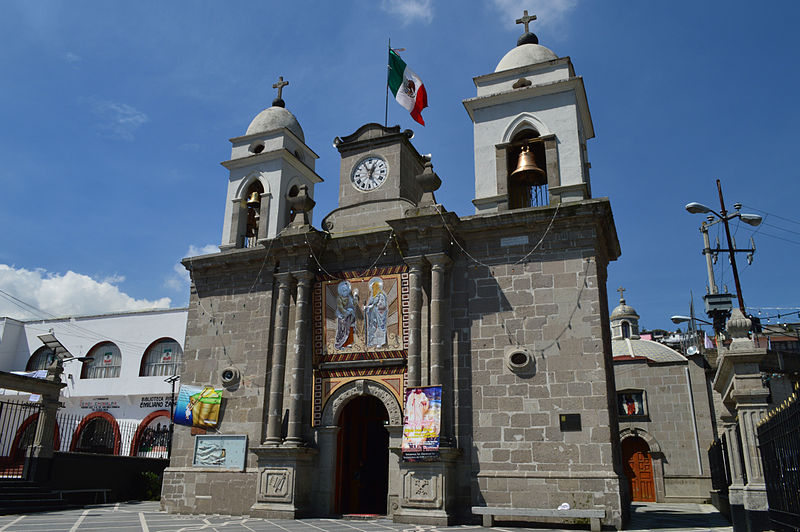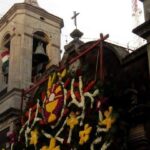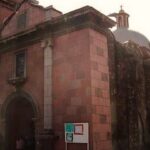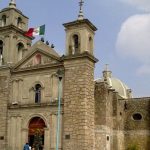
San Pablo Chimalpa is one of the five original settlements of Cuajimalpa. On the Cuajimalpa-Huixquilucan highway, the town is about four kilometers from the alcaldía seat in the town of San Pedro Cuajimalpa. With a crooked town center, the church and atrium set the tone for an afternoon of fun in a surprisingly small and rugged town.
San Pablo’s Nahuatl name comes from the word chimalli, meaning “on the shield.” The patron saint is believed to derive from the two saints, Peter and Paul. San Pedro watches over the whole of Cuajimalpa and the neighborhood of Chimalpa was specifically assigned to Saint Paul (Pablo).
According to oral tradition, the town was founded in 1532 by a warrior named Chimalli. The first Viceroy of New Spain, Antonio de Mendoza, was redistributing land at the time. It was part of Tepeneca territory prior to that redistribution. As early as the Cuauhximalpan Codex (late 17th century), the people are said to have been part of the San Pedro Cuajimalpa district.
Chimalpa was always on the lesser of the two roads to Toluca. By about 1700, the Dominican priests had founded the parish still dedicated to San Pablo. Because it was such a backwater place, several nearby caves were used, prior to the church founding, by dissident Mexica groups. These are still popularly known as the Espinazo del Diablo, that is, as the “Devil’s Backbone.” Numerous artifacts have been collected from the area.
This character again emerged during the struggle for Mexican Independence. The area’s rugged terrain served insurgents well as they harassed heavy Royalist traffic on the road to Toluca. Thereafter, the area sank back into its steady isolated calm.
Only in 1862 was the town combined with Acopilco, San Mateo Tlaltenango, and San Pedro Cuajimalpa to form what was then a municipality. The town was largely spared the ravages of the Mexican Revolution, although it collectively purchased much of the surrounding territory beginning in 1913.
The new PILARES cultural and arts center is right next to the church in the town center. After a morning shopping in Santa Fe or visiting some of Cuajimalpa’s more modern areas, Chimalpa will very likely come as a relief.
 +525581643246
+525581643246

Nearest at 1.48 kms.

Nearest at 1.90 kms.

Nearest at 1.96 kms.

Historical and charming San Pedro Cuajimalpa is high in the mountains of Mexico City - and always remarkable.

The highest altitude of any village in the city, this one is rugged and wonderful.

A history of ranching as rugged as its tall trees and mountainous landscape.

One of the most rugged old towns of Cuajimalpa, this one's worth a visit just for the views.